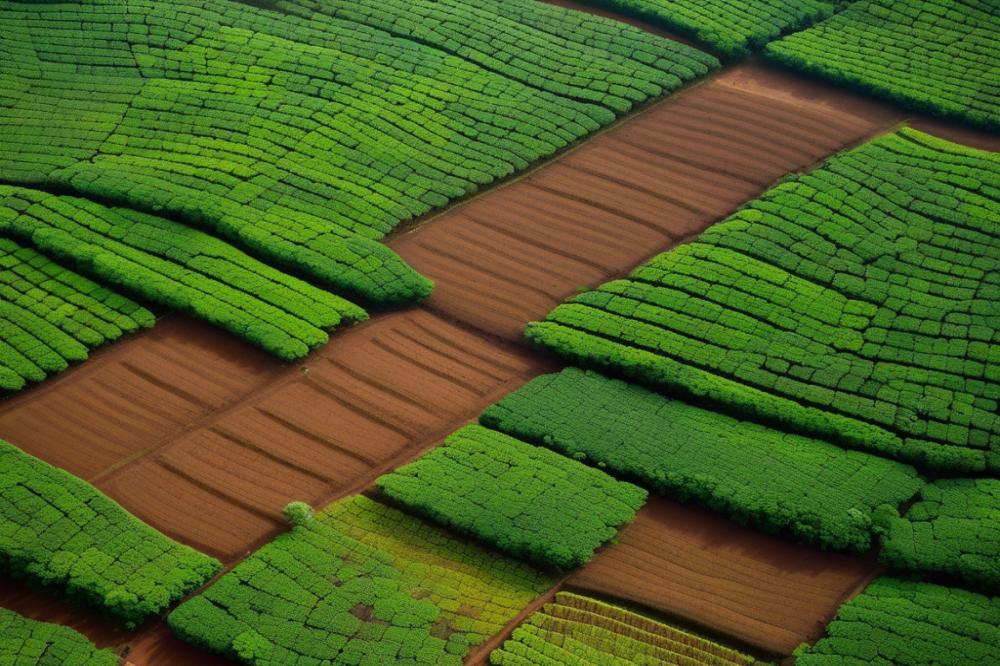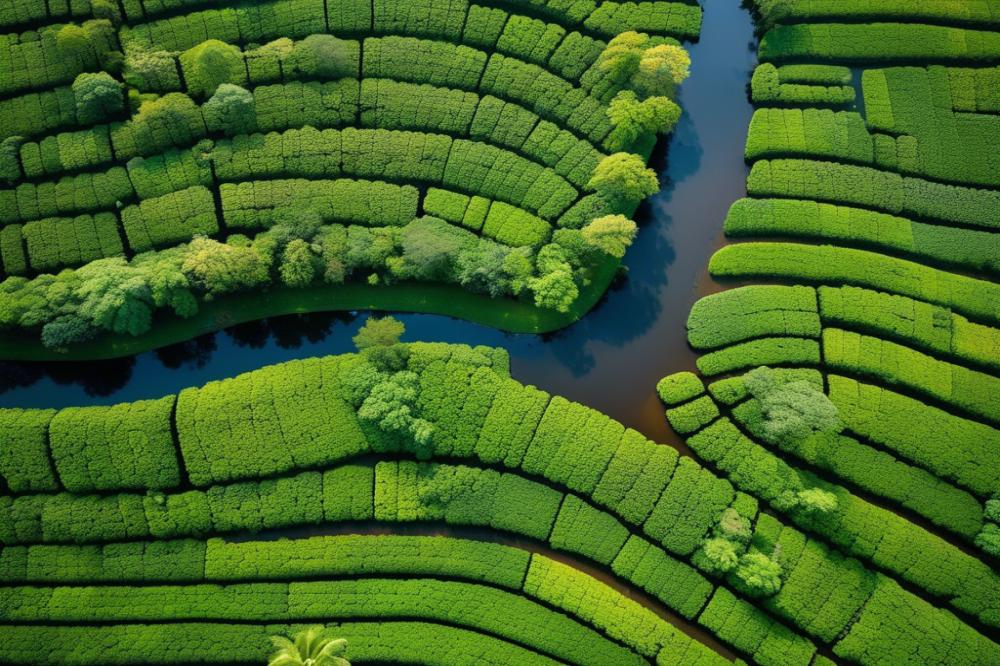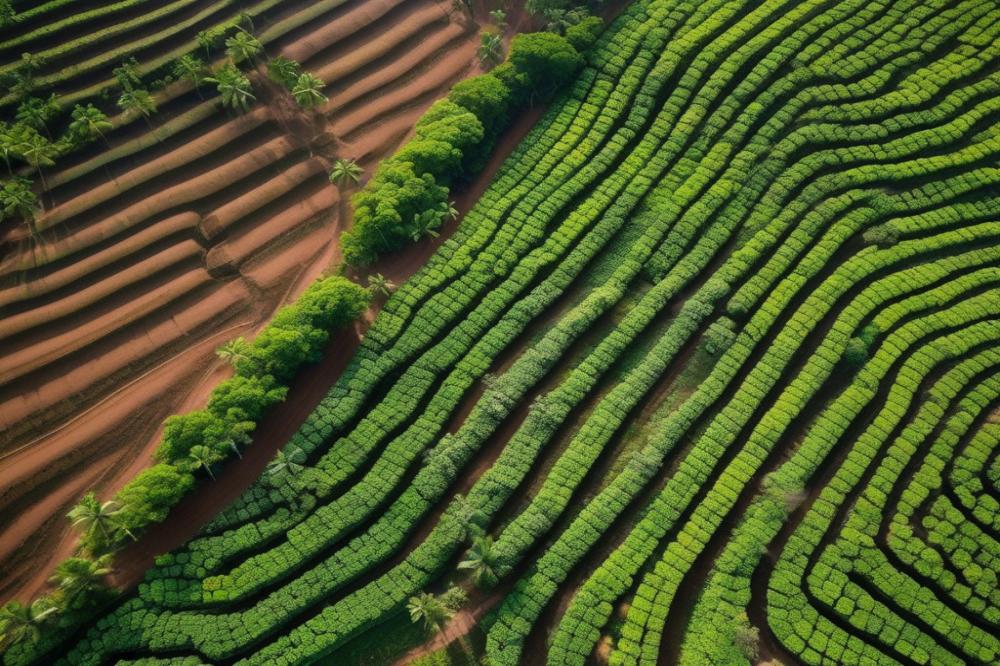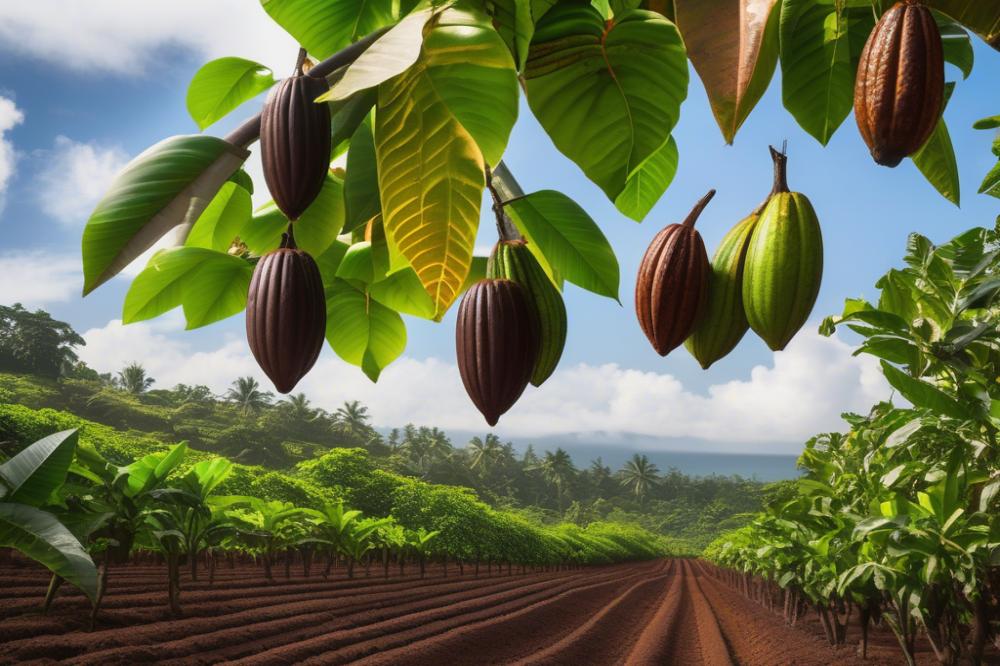How climate change is Affecting cocoa supply chains
The chocolate industry is a significant player in the global market. With an insatiable demand for chocolate products, the need for cocoa is ever-increasing. This bean, which is the heart of chocolate, relies heavily on specific environmental conditions. Farmers grow cocoa primarily in tropical regions, where temperatures and rainfall create ideal growing conditions. However, this reliance makes cocoa production vulnerable to various external factors.
climate change is a pressing issue that poses serious challenges to agriculture worldwide. It refers to alterations in weather patterns and global temperatures, with effects that ripple through ecosystems. As temperature rises and weather becomes less predictable, farmers face growing obstacles. Changes in rainfall can lead to droughts or floods, harming crops and affecting yields. In cocoa-growing regions, these shifts jeopardize the delicate balance needed for healthy cocoa trees.
Understanding how these environmental impacts affect sustainability in cocoa supply chains is crucial. Deforestation often accompanies agricultural expansion, putting biodiversity at risk. Furthermore, the economic impact of climate change on cocoa farmers can be severe. When yield declines, families wrestle with diminished incomes. Trade challenges arise as supply becomes inconsistent. For both consumers and producers, addressing these issues is vital for future success in the chocolate industry.
Impact of Climate Change on Cocoa Production

One significant issue facing cocoa production is the rise in temperature. Cocoa trees thrive in specific temperatures, typically between 20°C and 30°C. As temperatures rise, these trees may struggle to survive. They could produce lower yields or even fail to fruit altogether. Farmers rely on these trees for their livelihoods. Any disruption can lead to serious economic consequences.
Additionally, changes in weather patterns affect crop growth. Alternating heavy rains and long dry seasons can create instability. Farmers may find it challenging to predict when to plant and harvest. This unpredictability leads to reduced crop yields. Such fluctuations not only impact farmers but also the entire supply chain. The risk of crop failure becomes higher, posing trade challenges for cocoa exports.
Ideal Growing Conditions Shift
Cocoa growing conditions are slowly transforming. Farmers often practice unique farming techniques that reflect their environment. As conditions change, they may need to adapt their farming practices. Unsuitable environments could promote deforestation as farmers seek new lands to cultivate. This change threatens biodiversity, which is crucial for maintaining a healthy ecosystem. The delicate balance of nature becomes increasingly difficult to manage.
Local economies rely heavily on cocoa production. As these production challenges become more pronounced, communities may suffer. Job losses could occur as plantations struggle to meet demand. Maintaining sustainability becomes imperative for the future of cocoa agriculture. Solutions must be found to mitigate these challenges, or the consequences will deepen. Everyone involved in the cocoa trade must adapt to survive in a changing world.
Deforestation and its Effects on Cocoa Supply Chains

Cocoa farming plays a significant role in deforestation. In many cocoa-producing countries, forests are cleared to make way for new plantations. This practice contributes greatly to habitat loss. It disrupts local wildlife and endangers various species. As forests disappear, biodiversity also declines. Many animals lose their homes and food sources.
Increased temperatures and changing weather patterns directly impact agriculture. Crop yields can suffer due to these environmental changes. Dry spells can ruin cocoa trees, while heavy rains may wash away seedlings. Farmers face more challenges than ever. With unpredictable weather, planning becomes complicated. Cocoa production becomes less reliable as a result of these factors.
Trade challenges arise from these disruptions. Many cocoa growers struggle to meet market demands. Fluctuating supply may lead to rising prices and unstable income for farmers. The economic impact can be severe, particularly for communities that rely on cocoa. Sustainable farming practices can help. Employing shade-grown methods allows farmers to plant cocoa alongside existing trees, protecting forests while still cultivating crops.
Education is vital for implementing better techniques. Training for farmers promotes environmentally friendly approaches that reduce deforestation. Additionally, organizations are partnering with local farmers to create better practices. These strategies strive to conserve forests while improving yields. Investing in agroforestry systems can facilitate progress by combining timber and cocoa farming.
Alternative income opportunities may reduce reliance on intensive farming. Crop diversification, for instance, allows farmers to plant other fruits or vegetables alongside cocoa. This not only helps the environment but also ensures better economic stability. Resilient farming methods can be developed over time. Climate-smart agriculture encourages adaptation to changing conditions.
Adaptation and Innovations in Farming Practices

With rising temperatures and shifting weather patterns, cocoa farmers are adjusting their methods. Sustainability has become a focal point in agriculture. Innovative practices help combat the challenges posed by environmental changes. Many farmers are embracing new techniques to safeguard their cocoa production.
Introduction to Sustainable Farming Practices
Adapting to current challenges requires a shift in thought. Sustainable practices reduce the need for harmful chemicals and promote healthy ecosystems. Farmers are planting shade trees, which combat deforestation and provide a better environment for cocoa trees. Crop rotation and intercropping can enhance soil health and diversify income. Such methods also support biodiversity, forming a buffer against pests and diseases.
Use of Technology and Innovation in Cocoa Agriculture
Technology has an important role in modern farming. Many farmers use mobile apps to predict weather changes and plan their activities accordingly. Drones are now helping monitor crop health and optimize yields. Precision agriculture techniques allow farmers to apply resources more effectively. With innovative irrigation systems, water use can become more efficient. All these advancements promote better management of resources.
Case Studies of Successful Adaptation Strategies
Across the globe, cocoa farmers are implementing various successful strategies. In Ghana, farmers have adopted agroforestry techniques. This practice enhances soil quality while increasing cocoa yield. Another example comes from farmers in Ecuador. They utilize resilient cocoa varieties that withstand extreme weather. Their experience shows that adapting to climate realities can lead to better outcomes.
In Indonesia, smallholder farmers are working together to implement sustainable farming. By sharing knowledge and resources, they tackle economic impacts more effectively. Improved farming practices have led to increased productivity and better quality cocoa. The community’s collaboration demonstrates the strength found in unity and shared objectives.
Trade challenges remain, but innovation offers hope. By embracing new farming practices, these cocoa producers are better positioned for the future. Addressing complex issues involves understanding the intricacies of both agriculture and economic factors. The commitment to sustainability and innovation is vital for the survival of cocoa farming.
Economic Impact and Trade Challenges
Climate change significantly impacts the economic stability of cocoa producers around the globe. Farmers face challenges like shifting weather patterns and increased temperature rise. These changes can reduce crop yields, leaving producers struggling to maintain their livelihoods. Cocoa is a delicate crop, highly sensitive to changes in temperature and rainfall. A small shift can lead to significant declines in production.
Trade challenges also emerge as supply chains adapt. As farming practices change in response to environmental stressors, the traditional methods may no longer suffice. New approaches might be necessary, but they often require resources and training that farmers lack. Global markets may experience fluctuations, troubling small-scale farmers who depend heavily on consistent demand.
Consumer demand has shifted towards sustainability in the last few years. More buyers are seeking responsibly sourced cocoa, which adds complexity to global trade networks. Brands that wish to promote sustainable practices might struggle to find suppliers who adhere to these new standards. Deforestation and loss of biodiversity become pressing issues, as the quest for more land to grow cocoa can lead to environmental degradation.
As economic pressures mount, some farmers may abandon cocoa production altogether. This could lead to a decrease in available cocoa, raising prices and making it difficult for consumers to find their favorite products. The balance between profitable production and sustainable practices is delicate. Everyone involved in the cocoa supply chain feels the effects of these disruptions. The future of cocoa agriculture hangs in the balance.
The Role of Industry Stakeholders in Addressing Climate Change
Chocolate companies are taking steps to address the effects of climate change on cocoa supply chains. Responses vary but show a growing acknowledgment of the problem. Some firms are investing in research to improve farming practices. Others are promoting sustainability initiatives to help farmers adapt to changes in their environment.
Corporate responsibility has become a significant focus for many chocolate producers. They realize that protecting cocoa production is crucial not just for their business, but also for the communities involved. Some companies are funding projects aimed at reducing deforestation. These efforts help preserve biodiversity and maintain healthy ecosystems essential for cocoa farms.
Corporate Sustainability Initiatives
Sustainability initiatives often include commitments to fair trade practices. Ensuring farmers receive fair compensation is a key goal. Companies are also looking at their sourcing practices to minimize environmental impacts. This includes working directly with farmers to train them in sustainable agriculture, aiming to increase yield while decreasing vulnerability to weather patterns.
Rising temperatures and unpredictable weather patterns threaten cocoa quality and supply. In response, companies are exploring innovative solutions like climate-resilient cocoa varieties. These efforts not only aim to protect crops but also support the livelihoods of farmers. The economic impact on local communities can be devastating if cocoa production declines.
Collaboration for Resilience
Collaboration plays a vital role in creating a resilient cocoa industry. A range of stakeholders, including governments and NGOs, are joining forces with the chocolate sector. These partnerships are crucial to tackling trade challenges that arise from climate effects. They help share knowledge and resources, often leading to better systems for farming and trade.
Programs backed by international organizations can also provide significant assistance. They often focus on educating farmers about sustainable practices. Training can reduce the risks associated with changing weather, thereby enhancing local cocoa production. Efforts like these can preserve local economies while fostering environmental stewardship.
Final Thoughts on Cocoa Supply Chains and Climate Impact
The effects of changing weather patterns on cocoa supply chains are significant and far-reaching. Farmers face the consequences of rising temperatures and unpredictable rainfall. These challenges affect not only the yield but also the quality of cocoa beans. Many growers are struggling to adapt, and this could threaten future supplies of chocolate.
Sustainable practices are crucial for the future of cocoa production. They can help mitigate some of the negative impacts on agriculture caused by environmental changes. By adopting eco-friendly methods, farmers can improve the health of their land and ensure a steady supply of cocoa. These practices can include reforestation, crop diversification, and organic farming techniques that protect the earth’s resources.
Industry stakeholders have a pivotal role in promoting sustainability. Chocolate manufacturers and retailers must commit to sourcing cocoa from ethical producers. Consumers also play a significant part. Choosing sustainable chocolate products can drive demand for responsibly grown cocoa. When consumers voice their preferences, they create an incentive for companies to make better choices. Together, we can support a system that is healthier for the planet and beneficial for farmers. Every purchase is a vote for sustainability, low-impact farming, and a secure future for cocoa lovers everywhere.



